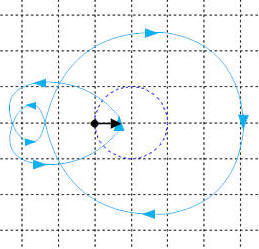To really find a solution, Positively
During my research in Engineering, I came across this problem.
There is a complex valued function, with the domain as the imaginary axis.
\[P(j\omega) = P_R(\omega^2)+j\omega P_I(\omega^2)\]

I need to find the value of , at the sequence of points where it is real and draw appropriate conclusions.
There are two scenarios here. (1) Both and are polynomials in . (2) Not case 1.
For case 1 : As we are interested in values of ) at those , where , it is obvious that we are interested ONLY in positive and real solutions to .
My question to the community is this.
- Are there any methods to find the real roots (or better positive real roots) of a polynomial, without actually finding all the roots?*
If there is no simpler solution, than finding all the roots; then the procedure which I envision would become more computationally complex than a conventional technique that is more than 80 years old.
If case 1 is worth pursuing, then case 2 could be an interesting extension.
Easy Math Editor
This discussion board is a place to discuss our Daily Challenges and the math and science related to those challenges. Explanations are more than just a solution — they should explain the steps and thinking strategies that you used to obtain the solution. Comments should further the discussion of math and science.
When posting on Brilliant:
*italics*or_italics_**bold**or__bold__paragraph 1
paragraph 2
[example link](https://brilliant.org)> This is a quote# I indented these lines # 4 spaces, and now they show # up as a code block. print "hello world"\(...\)or\[...\]to ensure proper formatting.2 \times 32^{34}a_{i-1}\frac{2}{3}\sqrt{2}\sum_{i=1}^3\sin \theta\boxed{123}Comments
There are no comments in this discussion.